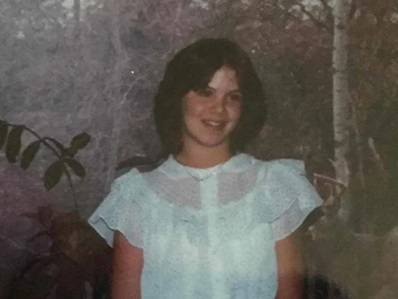
Rashell Ward was killed in 1983 at only 14-years-old. Credit: Tehama County Sheriff's Office, from family of Rashell Ward.
In 1983, a California city known for its agricultural roots was shocked by the murder of a 14-year-old girl on her way her school. Inundated with tips and evidence that was useless at the time, rumors rocked the town the longer the Tehama County Sheriff’s Office failed to point to a suspect.
At one point, some of the citizens believed the sheriff at the time was involved with the homicide, and that’s why it was being covered up—even though no evidence implicated the man. At another point, convicted murderer Henry Lee Lucas, known as The Confession Killer, claimed he killed the girl—one of the 600 murders he falsely confessed to.
Now, thanks to forensic investigative genetic genealogy (FIGG), authorities can confirm 14-year-old Rashell Ward was murdered by Johnny Lee Coy, who was not a suspect at the time but did have a violent criminal history.
A false confession
On March 3, 1983, Ward was abducted while walking to school in the city of Red Bluff, California around 8 a.m. By 11:30 a.m. that same day, authorities found her body bound, raped and shot. They gathered evidence, including samples that could not be analyzed with the technology of the day. Of course, those would come into play in later years.
The Tehama County Sheriff’s Office interviewed and vetted numerous individuals, but did not generate a lead. Eventually, Henry Lee Lucas claimed he was responsible for the murder. However, detectives were able to eliminate him as a suspect due to inconsistencies of the confession and evidence. For example, his confession spoke about areas where the body was not found. He also did not know specifics of the crime. Authorities would later learn Lucas did not commit any of the 600 murders he claimed to, with the exception of his mother and two others.
But, time, money and resources were wasted on Lucas’ claim. Still, the department was sure he was not the perpetrator.
“I’m proud of investigators back then for not taking the opportunity to say, ‘he’s the guy,’ and close it out. We’d be standing here embarrassed today,” said Tehama County Sheriff Dave Kain.
The investigation remained open through the 1990s and 2000s, with additional suspects interviewed, DNA samples taken, witnesses re-interviewed, and leads pursued. Evidentiary items were even resubmitted for DNA analysis as technological advancements occurred, but to no avail.
All-in-all, Kain estimates over 200 investigators became involved with Ward’s case over the years.
Rootless hair sample
They finally got their big breakthrough when detectives discussed using forensic investigative genetic genealogy in 2022. Looking through the evidence for samples that meet FIGG requirements, the investigators were thrilled to find a rootless strand of hair recovered from Ward’s body that did not belong to her. As the foremost experts in this type of analysis, the Sheriff’s Office sent the sample to Astrea Forensics for analysis.
Once the genotype file was completed by Astrea, the FBI’s Genetic Genealogy Task Force got involved. While the genealogy process can be lengthy sometimes, it was not in this case. The FBI quickly developed a lead, identifying Johnny Lee Coy as a possible suspect.
Coy lived in Red Bluff at the time of the murder, and investigators noticed he had a violent criminal history. In 1989, six years after Ward’s murder, Coy kidnapped a mother and daughter, and forced them to drive at gunpoint. He sexually assaulted the 21-year-old daughter and then stole their car. He was later found in Red Bluff, armed with a handgun. He was arrested, convicted, and sentenced to two life terms in prison. Coy died in prison in June 2019.
Coy’s family members voluntarily provided DNA samples to be compared against the DNA recovered from the 1983 evidence. The California Department of Justice’s forensic lab confirmed the that it was “highly likely” the DNA obtained from the evidence was a match to a family member of the living relatives.
The Tehama County Sheriff’s Office also noted that a DNA sample was taken from Coy when he was imprisoned in 1989. It was entered into CODIS at the time, but the upload didn’t contain the same number of DNA markers used today. When investigators requested a re-upload using today’s technology, they quickly received a CODIS match. The results showed Coy’s DNA matched the DNA evidence from 1983 retrieved off Ward’s body.
“The Tehama County District Attorney’s Office agreed that if Johnny Lee Coy was alive today, the overwhelming DNA evidence would be enough to charge him with the crimes committed against 14-year-old Rashell,” said Kain. “We have fulfilled the true belief of a criminal investigation. We ruled out people that needed to be ruled out, and found the person who was ultimately responsible.”
Ward’s case is now considered solved and closed. But this won’t be the last time the Tehama County Sheriff’s Office uses FIGG. Kain said they even have specific cold cases in mind, but he could not disclose them at this time.
“We will love to tell you about [the cases] in the future when we solve them,” said Kain.